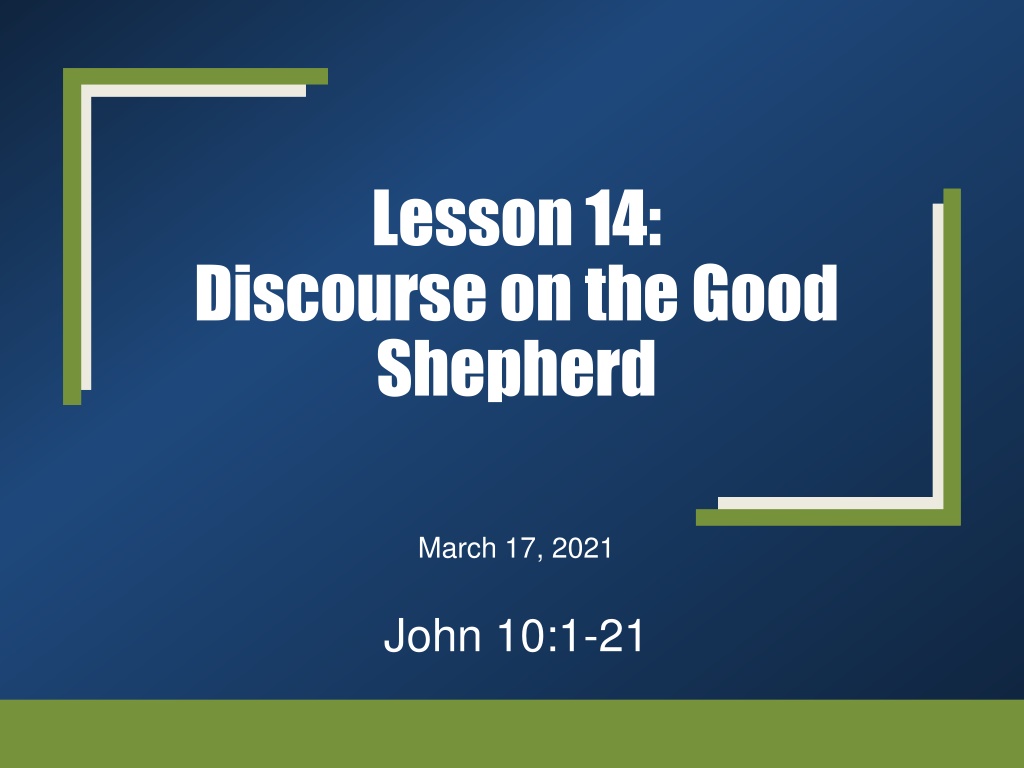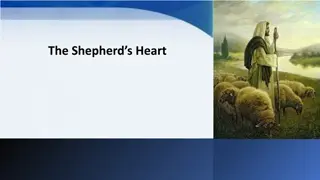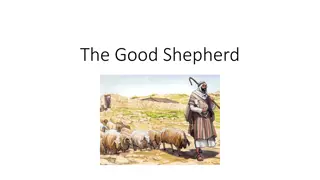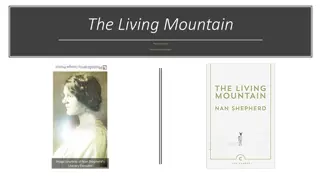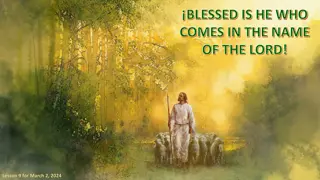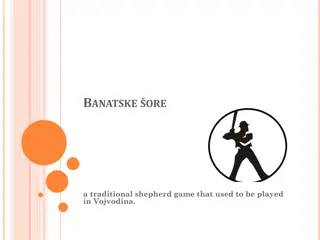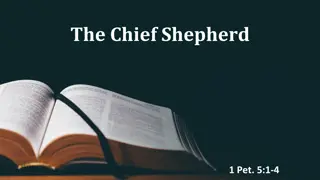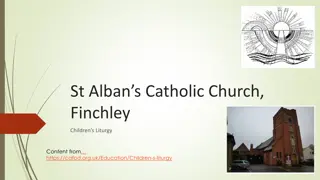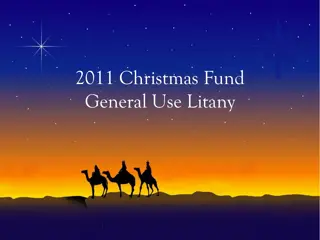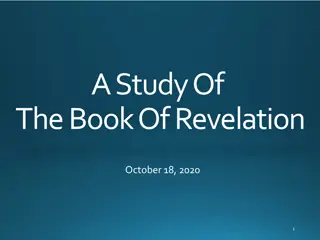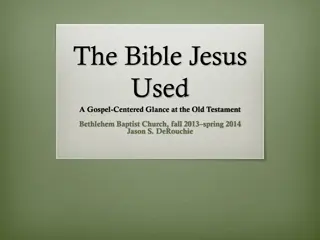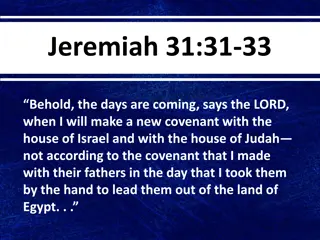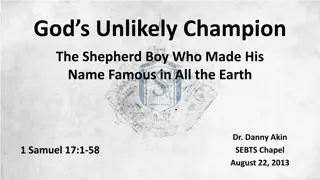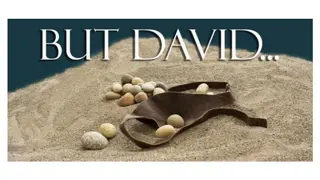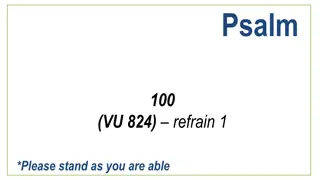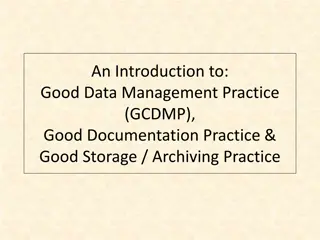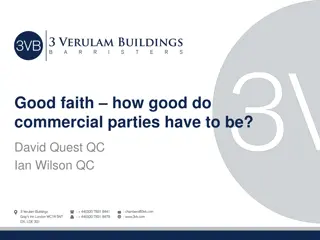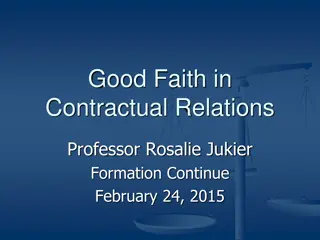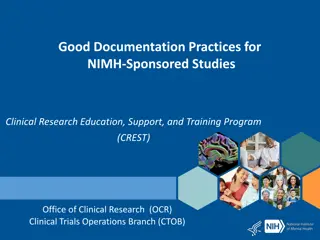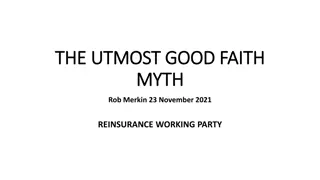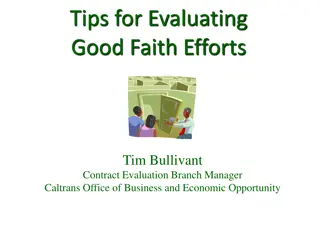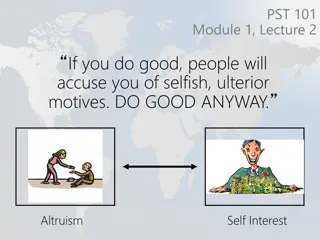Insights on the Good Shepherd from John 10:1-21
In John 10:1-21, Jesus refers to Himself as the Good Shepherd, emphasizing unity among believers regardless of origins. The discourse challenges misconceptions about the other sheep and underscores the inclusive nature of the Christian faith. Through insightful interpretations, the message highlights Jesus as the sole authority and unifying force in the church, bridging the divide between Jews and Gentiles. The application of this passage encourages a common understanding and acceptance of all who heed His voice, fostering a sense of community within the body of believers.
Uploaded on Oct 09, 2024 | 0 Views
Download Presentation

Please find below an Image/Link to download the presentation.
The content on the website is provided AS IS for your information and personal use only. It may not be sold, licensed, or shared on other websites without obtaining consent from the author. Download presentation by click this link. If you encounter any issues during the download, it is possible that the publisher has removed the file from their server.
E N D
Presentation Transcript
Lesson 14: Discourse on the Good Shepherd March 17, 2021 John 10:1-21
Discourse on the Good Shepherd John 10:1-21 John 10:16, And other sheep I have, which are not of this fold: them also I must bring, and they shall hear my voice: and they shall become one flock, one shepherd.
Discourse on the Good Shepherd John 10:1-21 APPLICATION: JESUS IS THE DOOR OF THE SHEEP. HE IS THE GOOD SHEPHERD. John 10:7-18 10:16 Many false teachers use this verse to attempt to find authority for a new revelation. Jehovah s Witnesses say the other sheep are the Kingdom class of 144,000 who will go to heaven, while all other righteous people will live on a perfected earth. Mormons claim that the other sheep are the American Indians about whom they say the Book of Mormon gives a history. However, Jesus is the one shepherd and all who enter by Him (the one door ) will become one flock (not two as these doctrines claim.)
Discourse on the Good Shepherd John 10:1-21 APPLICATION: JESUS IS THE DOOR OF THE SHEEP. HE IS THE GOOD SHEPHERD. John 10:7-18 Jesus was talking to Jews, Israelites who considered that they were the only fold of God. Jesus was foretelling that the spiritual fold (the church) would consist of Jews AND Gentiles.
Discourse on the Good Shepherd John 10:1-21 APPLICATION: JESUS IS THE DOOR OF THE SHEEP. HE IS THE GOOD SHEPHERD. John 10:7-18 The other sheep are Gentiles who obey the gospel. (Ephesians 2:11-16) Jesus used the term I have in the same sense of Acts 18:10 where He spoke of some not yet obedient, but who would be. Jews and Gentiles who hear his voice become a part of the one flock. (cf. Acts 10:34-35; 15:7-9) Flock and fold refer to the people of God who make up His body, the church. (Ephesians 1:22-23; 4:4-7; Colossians 1:18; cf. Galatians 3) One flock, one fold, one body, one church. When we preach the same message, we preach the same means of entrance into the one fold.
Discourse on the Good Shepherd John 10:1-21 APPLICATION: JESUS IS THE DOOR OF THE SHEEP. HE IS THE GOOD SHEPHERD. John 10:7-18 Other Sheep: Isaiah had said, Israel s place in the scheme of things was ultimately to be a light to the nations (42:6; 49:6; 56:8). Jesus taught in Samaria. (John 4:40) To be a Jew was no guarantee of entrance into His kingdom. (John 8:39) Jesus praised the faith of a Roman centurion. (Matthew 8:10) He marveled that a Samaritan leper was the only one who returned to give Him thanks. (Luke 17:19) Note: The good Samaritan. (Luke10:37)
Discourse on the Good Shepherd John 10:1-21 APPLICATION: JESUS IS THE DOOR OF THE SHEEP. HE IS THE GOOD SHEPHERD. John 10:7-18 Jesus taught that men would come from every direction to sit down in the kingdom. (Matthew 8:11; Luke 13:28) Jesus had just said, I am the light of the world, not just of the Jews. (John 8:12) The Great Commission is to preach the gospel to all. (Matthew 28:19; Luke 24:44; Mark 16:15; cf. Isaiah 2:2ff).
Discourse on the Good Shepherd John 10:1-21 APPLICATION: JESUS IS THE DOOR OF THE SHEEP. HE IS THE GOOD SHEPHERD. John 10:7-18 10:17-18 The Father planned the scheme of salvation. (cf. Acts 2:21-24) Jesus had power to lay down His life and to take it up again. Jesus by His own will submitted Himself to His father's commandment. (Heb. 5:8-9; Matthew 26:53) Matthew, Mark, and Luke fix their attention more upon the violent taking of Jesus life. John focuses on Jesus willing sacrifice of Himself to God.
THE JEWS SEEK TO STONE JESUS AT THE FEAST OF DEDICATION. John 10:19-42 10:19-21 The Jews were divided. (cf. John 6:52; 7:43; 9:16) Some said Jesus was a demon, others defended Him by correctly reasoning that a demon could not open the eyes of the blind. Here we go again. 7:20, 40-44; 8:48; 9:16
THE JEWS SEEK TO STONE JESUS AT THE FEAST OF DEDICATION. John 10:19-42 10:22-26 The feast of the dedication. In John 7 we read of the feast of Tabernacles. [It] was the last major feast of the sacral year, and was considered preeminent among the Jewish festivals, as the holiest and greatest (Josephus). It fell between 15-22 Tishri (September-October), and commemorated the Israelites dwelling in tents in the wilderness after the Exodus (Lev. 23:39-43; Deut. 16:13-15) and the ingathering of the fruit of the vine and of the olive. We noted that the feast of Tabernacles was six months before the death of Jesus. Jesus death occurred at the end of the Passover. (Daniel H. King, Sr., John, Truth Commentaries, Page 198)
THE JEWS SEEK TO STONE JESUS AT THE FEAST OF DEDICATION. John 10:19-42 10:22-26 The feast of the dedication. Intertestamental period: The Feast of Dedication is called Chanukah (from chanak, to dedicate ) by the Jews, and was first instituted to commemorate the cleansing of the Temple in 167 B.C. by Judas Maccabaeus (1 Macc. 4:52-59; 2 Macc. 10:5; and Josephus Antiquities 12.5.4). The Syrian ruler Antiochus Epiphanes had profaned it three years earlier (to the day). Jews celebrated both in Jerusalem and elsewhere very much like they did the Feast of Tabernacles (2 Macc. 10:6); it was even called the Feast of Tabernacles in the month of Kislev (2 Macc. 1:9). (Daniel H. King, Sr., John, Truth Commentaries, Page 266)
